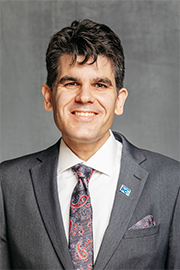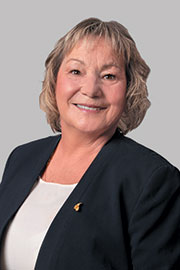- Aug/23/22 9:00:00 a.m.
- Re: Bill 7
Thank you very much, Mr. Speaker. At the outset, let me just mention that I’ll be splitting my time with my parliamentary assistant, the member for Lanark–Frontenac–Kingston.
I rise today to speak on the proposed amendments to the Fixing Long-Term Care Act, 2021. The changes are part of the government’s larger Plan to Stay Open: Health System Stability and Recovery.
As everyone knows, health care systems around the world have been facing unprecedented challenges, obviously due to COVID-19 and a number of other issues that we have been facing across not only the province of Ontario, but all across the planet since the outbreak of COVID. Ontario, I would suggest, has done an exceptional job working together with our federal partners and really working with our municipal partners and across sectors to help address the challenges that we have been facing with COVID-19.
I think it is important to note, Speaker, that Ontarians have also really done an extraordinary job in helping us combat COVID-19. We have one of the highest vaccination rates in the entire world, and I think that is a testament not only to Ontarians’ desire to move beyond this, but it is also a testament to the incredible health care workers that have also helped us every single day to ensure that we had the ability to provide these vaccines in such an incredible fashion, as we have in the province of Ontario.
Now, based on the latest modelling from Ontario Health, further action is obviously needed to strengthen the health care system, action that if not taken immediately could see a shortage of beds of about 2,400 spaces as we head into the fall, where respiratory challenges, flu and COVID-19 again will rear their heads, because we are certainly not behind this.
Much of this summer’s focus has been on hospital emergency departments, which have faced many challenges. But of course, emergency departments are only a part of the larger, interconnected system of care. We need to look for solutions at every stage of a person’s health care journey, and that is why we are here today.
As Minister of Long-Term Care, and, frankly, as an Ontarian and parliamentarian, I take pride in our health care system and its ability to adapt. There are many steps that we can take now to address these challenges and to avoid overstrain of our health care system and to establish better models of care.
One of the main ways to help hospital capacity challenges is to ensure that patients are getting the appropriate level of care in an appropriate setting. There are many patients in hospitals across the province whose care needs can be better met elsewhere. These patients are often referred to as alternate-level-of-care patients, or ALC patients for short. ALC patients in hospital no longer need to be there, and many would have a much better quality of life in a long-term-care home. At the same time, moving these ALC patients out of the hospital and into long-term care obviously frees up much-needed space in hospitals for patients who require hospital treatment.
Our priority is for people to live and receive care where they can have the best possible quality of life close to their family, caregivers and friends.
As the Minister of Long-Term Care, my ministry is taking several actions to improve how we transition ALC patients, whose needs would be better met in long-term care, out of hospitals and into homes. Initiatives that help divert people out of hospitals when they don’t require hospital care are the key part of the broader health system stability and recovery plan that our government released last Thursday.
The steps that the Ministry of Long-Term Care is taking to deliver on this plan include, very specifically, the following actions: We will be reactivating long-term-care respite programs for high-needs seniors to prevent possible hospitalizations—and I want to just talk about this really briefly. This is a very important program, and I’m sure a lot of colleagues, as they were knocking on doors, might have heard people talk about this. I did on a number of occasions. This is a program where long-term-care homes are used to provide temporary relief for somebody who is providing care for a loved one at home and just simply needs a break. COVID-19 forced us to close these temporary respite care opportunities across the province of Ontario, forcing many people to use the hospital system as their opportunity to get a break. These people, these families, these caregivers providing help to loved ones—more often than not, it is for very challenging cases, like dementia and other very serious issues. I was knocking in my riding on a number of occasions, and I can’t tell you how many people asked me, “Could we reopen the respite care?” They’ve done all that they needed—a number of cases where people had said they can’t get the surgery they need because they don’t have another option for their loved one. So this is part of the plan.
Reopening these respite care opportunities for people would help open up spaces in our acute care system—also, opening up long-term-care beds that no longer need to be held for pandemic-related isolation purposes. I’ll be doing that through an updated minister’s directive coming into effect on August 23—today. I just want to really briefly talk about this. There are thousands of beds that were set aside for isolation purposes in the province of Ontario at the height of the pandemic, Speaker. Predominantly, as we learned through the first two waves—and admittedly, the province of Ontario was not in a position in the first two waves to properly address COVID-19.
I have said this on a number of occasions: We inherited a system that was badly broken. We inherited a system that was not prepared to deal with a global pandemic. It did not have infection prevention and control measures. It still had ward rooms, outdated and old long-term-care facilities. PPE was something that was not being addressed.
But, to be very clear, at the same time, we started, almost immediately after getting elected in 2018, to start to address the underfunding in long-term care with an immediate upgrade, an announcement of 30,000 new long-term-care beds across the province of Ontario. Part of the rationale for that was to not only catch up to the serious backlog that we had because of the years of underfunding, but it was also to modernize those old, outdated homes. That work was already under way. It also included, in co-operation with the Minister of Health, the transition to the Ontario health teams.
Now, that was something that is very important. We don’t talk about it a lot, but for long-term care, that is a very important part of an integrated health care system. Because what that means is whether you’re in long-term care, hospital care or have a family doctor, you have a ribbon of care. We saw that undertaken in some of the early stages when hospitals took over the administration of some of our long-term-care homes that were incapable of reacting as quickly as a hospital could.
We dealt with the PPE not only in our long-term care but across our health care system. And of course, vaccines have changed the conversation, especially in long-term care. So what we did was put about 2,000 beds aside for isolation purposes across the province of Ontario. These are beds that could not be used, that needed to be there in case homes went into outbreak. That obviously is no longer required. That level of a bed is no longer required, because of the impact of vaccinations in our long-term-care homes.
I just want to leave you with this, Speaker. I think it’s close to 85% of our residents of long-term care who are eligible for their fourth dose have had their fourth dose. That is incredible. It is an incredible testament to the work that is being done by our health care professionals in those long-term-care homes and the impact that vaccines have, which allows us to remove so many of these beds for purposes of isolation, to put them back and make them available to the long-term-care system again.
But let me just say this: Part of the Fixing Long-Term Care Act requires that every home have an emergency plan and that that plan be submitted to the ministry for approval in case they have an outbreak. We are not suspending that, obviously. It just means that vaccines, the availability of vaccines, the investments that we’re making allow us to bring at least 1,000 beds back online into the system, and I think that is a very positive step for long-term care.
We are further exploring the use of vacant long-term-care beds as hospital-operated transitional or convalescent care beds, based on regional availability. And this is something that’s worked quite well, as well. This is where vacant long-term-care beds are, in essence, handed over to a hospital—we’ve done this in co-operation in Ottawa—and the hospital uses these beds as an extension of the hospital. It is a program that has worked not only in Ottawa and a couple of other communities in and around the GTA, it is a very important program and something that hospitals have asked us to continue. And we are going to be doing that.
We are going to work to enable community partnerships to provide more supplies, equipment, diagnostic testing in long-term-care homes to prevent potential hospitalization. And we are expanding specialized supports and services for people in long-term care with complex needs like bariatric, behavioural and dialysis.
I’m going to talk to those last two points before I get onto the final point of this. We’ve heard this a lot. Look, long-term-care homes can be more than just—it’s an important place. One of the things that I learned a lot, from the member from Haliburton and my parliamentary assistant too, and we’ve talked about this, is that a home is a home. My parliamentary assistant said it best when he said, “We want people to go from being patients to being residents.”
The member for Haliburton, every time we’ve discussed this, has always talked about—we always talked about long-term care homes. And I’ve heard this a lot. It’s not from her, because I’ll tell you what she has said. I’ve heard this a lot from people who have said, “You’ve got to stop thinking of long-term-care homes as places where we warehouse people, and we have to start thinking of long-term-care homes as a home, where somebody goes in their next chapter of life.” That is the guiding principle, something that the member for Haliburton has helped us understand and has helped guide—many of the things that are part of the Fixing Long-Term Care Act and many of the resources that we are putting here.
We’re talking about adding additional services in our long-term-care homes, Speaker, because they can be more than just a home. Like, if somebody needs dialysis right now, it is inappropriate, I believe, that we ship somebody from their home to the hospital and back to the home for dialysis. Can a long-term-care home provide that dialysis? Yes, it can. If it has the appropriate nursing staff, if it has the equipment, it can provide that service so the patient can be a resident and can stay in their home. This bill will allow us to do that.
We are also expanding behavioural supports through Behavioural Supports Ontario and with a partnership with Baycrest, which offers a virtual program which has been very, very successful across the province. We are seeing this more and more often. Dementia has become a very challenging issue, something that is challenging in our hospital settings, Mr. Speaker, but is also challenging in our long-term-care homes and, sometimes, a barrier to somebody going into a long-term-care home, where their needs are better serviced. This will allow us to provide those direct supports to homes. Before somebody has moved into a home, assess a home—does it need additional supports? This bill allows us to do it. It provides immediate funding and it provides permanent, ongoing funding. I think that is a very important part of this.
Finally, it provides further authority—and this is the part where I think a lot of discussion is, around this particular part. It provides further authority to assess an ALC patient’s ability to transfer into an alternative long-term-care home. What I mean by “alternative” is different from the home that they have put down as their preferred choice. I’m going to spend a couple of seconds just talking about that, because I suspect that that will come up a lot.
Let’s just take a look at that for a second, Speaker. Somebody who has been discharged from a hospital is an ALC patient but is staying in the hospital while they await their preferred long-term-care home. Right now they could be waiting in a hospital for six months—for six months. There is virtually nobody who would agree that, for somebody who is on the long-term-care waiting list, who wants to be in a long-term-care home, the best place for them to be would be in the hospital waiting for that.
What this bill allows us to do is it allows the long-term-care discharge coordinator in the hospital to access the resident’s choices: What are their choices? What are their preferred homes? Where do they want to be? Because when somebody has made that choice, they have presumably chosen to be near family, friends, their spouse, a partner, other available caregivers, in communities where they want to be. This bill allows us to do that. It allows us to say, “Look, these are your choices. They are not available, but these are the homes that might be available around your choices while you wait for a space to open up in your preferred home.” That is the very important part of this; it allows for these conversations to continue.
It also then allows the long-term-care placement coordinator to look to ensure that there actually are the services and supports that a patient would need when they become a resident of a home while they are waiting. There is no point in us transferring somebody who has been discharged from hospital out of hospital into a home that doesn’t have the appropriate nursing staff, that doesn’t have the appropriate PSWs, that doesn’t have the supports like behavioural supports or other supports needed to handle that patient. It allows us to review the homes, making sure they can handle the patient and, should the patient then ultimately consent to going into one of those homes, what changes would need to be made to ensure that we can accommodate the patient as they become a resident of that home temporarily.
Now, I’ve heard a lot of discussion from the opposition critic, who suggested we are going to be filling up the ward rooms and that’s where patients will go. Well, that is absolutely, positively false. It is absolutely incorrect. It is not something that is contemplated in this legislation. The vast majority of the rooms that are available in the long-term-care system right now are preferred rooms. It is a higher standard of room than the person has actually asked for. This bill protects them, because the vast majority of the times when we are placing somebody with their consent into a temporary home while they wait for their preferred home, they will be placed in a preferred room. And what I mean by “preferred room” is a single room or a higher standard than what they have chosen for. This bill protects them because it obviously is not going to charge them for preferred rooms; we offset that cost while you wait for your preferred choice. I think that is a very, very important part of this, because we obviously don’t want to disadvantage people while they are waiting for their preferred home.
There have been a lot of things that we have done, across the sector, to prepare our homes. I’ve said this on a number of occasions: Long-term care, finally, is in a position in the province of Ontario where we can be part of the solution to the acute-care challenges that have faced this province for literally decades. The fact that we so underfunded long-term care, as a province, for so many years is what has, in part, led us to the situation that we are in today. It is no secret that we have an aging population. It is no secret that we have to make the investments that we are making in long-term care, and it is no secret why we are making those investments—because we are building an integrated system of health care in the province of Ontario, something that people have called for for decades. We are doing it, and long-term care is going to be a part of that. Let’s look at some of the investments we have made that led us to the ability to do this.
We are bringing about four hours of care. This is an enormous change for the province of Ontario. I think when we took office in 2018, the previous government had left us with about two-and-a-half hours of care per resident a day. That was the legacy of the previous government. They had built something like 600 long-term-care beds. What have we done? Speaker, 58,000 new and upgraded beds across the province of Ontario. At the same time, we said it’s not just enough to build new beds; we have to have an increased level of care in every single long-term-care home across this province. That means 27,000 additional PSWs to care for people, and not just PSWs, but other health care professionals: nurse practitioners, allied health, dietitians—a whole spectrum of services available for our residents in long-term care as we go to the North America-leading four hours of care.
Again, I have to thank the member for Haliburton, who was instrumental in helping us get to this understanding of how important it was that we close down the ward beds and how important it was that we build new and modern facilities, and how important it was, if you’re going to build an integrated system, that you do it with the appropriate level of care so that there is no difference; so that, whether you’re in a hospital, whether you’re in a long-term-care home, you know that you’re going to get the highest level of care that is available to you as a resident in the province of Ontario.
We have also gone further than that. We’ve said that we have to do a better job of inspecting, ensuring the accountability.
A lot of people in this place will say that there can’t be private, for-profit, not-for-profit or municipal—one is better than the other, and so on and so forth. Mr. Speaker, I would submit to you—and I’ve said this outside of this chamber as often as I’ve said it inside of this chamber: When long-term care has failed, it is the responsibility of all of us that it has failed. It is because the rules weren’t put in place. It shouldn’t matter where you are, in what type of home you are; the standards should be exactly the same. And that is what we are doing through the Fixing Long-Term Care Act. We are ensuring that all of the standards are the same.
Mr. Speaker, we have hired additional inspectors. We are literally doubling the inspections. We will have the highest inspector-to-home ratio in the entire country by virtue of the investments we are making in long-term care.
But we’re going even further than that, because we know how important it is that people have access to information, at the same time—and finding the information on long-term-care homes in the province of Ontario was a difficult thing to do. You had to be able to search through a whole host of different websites to find information, to find an inspection report, to see what’s going on in a home. That is no longer the case in the province of Ontario. Through the good work of the Associate Minister of Digital Government, we were able to bring forward a brand new website that allows individuals easy access to click on a map and say, “This is the home I’m considering. What is the vaccination rate? What is the care that they are having there? What is the last inspection report that they have had? What are the issues that are facing that home? And how do I apply and get into the system if that’s where I want to be?” You can do that all across the province. It also allows you to look up that this is what’s happening in the community, this is the construction that’s happening, this home is being updated, when it is being updated, and where they are at in the process. I think that is also a very important change to long-term care.
We also brought in—and this was something that was driven by the former minister, now the minister of children and family services, the member for Kanata–Carleton, Minister Fullerton—the community paramedicine program. This is something that was driven by Minister Fullerton. This program started off as a pilot program. Those people who are waiting for long-term care, who are on the waiting list for long-term care, it allows paramedics in communities across the province to provide direct services to them as they wait.
This program has been so incredibly successful. It is something that communities across the province of Ontario have been asking us for, and it is something that, recently, I was able to extend across the entire province. I can’t tell you how well received it has been, how well it is going and how important it is to recognizing the fact that, yes, people may be on a long-term-care wait-list, that may be the case, but they don’t want to go into long-term care, in a lot of instances, until they are ready to go into long-term care. There should be other options available to people.
The community paramedicine program allows that to happen, in co-operation with what the Minister of Health is doing with respect to the billion-dollar investment in home care in the province of Ontario, the initiation of Ontario health teams. This is a very, very important time, I would submit, Mr. Speaker, for legislators and for us as the province of Ontario, because what we are doing is putting in place a change, a fix for health care for generations to come. It recognizes the extraordinary work that has led up to this.
Now, look, have we had challenges in health care? Absolutely, we have. We have a province that has grown so quickly, so fast, but despite that, Speaker, I would submit to you—and I hear this constantly—part of the challenges that people have with health care is not the care that they are getting. It is accessing the system. It is very difficult from one region to the next.
I’ve talked about it in the House. A father-in-law who injured himself in Durham region coming to live with me in Stouffville, changing from Durham to York region, how you get your PSWs to help, and the assistance, the changes—very, very difficult system to get into. But once you are in the system, it is a spectacular system despite the challenges that we are facing. We want to ensure, by the investments we’re making in health, the investments we’re making to increase staffing, that we are in a position to have the best quality of care.
Speaker, I talked about some of the new building that is happening across the province of Ontario. I think it’s worth noting, because a number of colleagues here will know that last year, as part of this, we announced a number of allocations, which have actually exceeded what our goal was. We’ve actually exceeded the goal.
I’ll put that in context. In the first three months of this year, I announced bed allocations in pretty much every part of the province. Some of the areas: Lancaster, Simcoe, Brantford, Sarnia, Hanover, Hamilton, Mississauga, Guelph, Gananoque, Paris, Killarney, Marathon, Elliot Lake, Manitouwadge, Haliburton, London, Timmins, Kapuskasing, Toronto, Niagara, Markham and Stouffville.
We also announced that surplus government lands in Mississauga, Hamilton and Etobicoke would be made available for long-term care—and these are unused government properties—something that we’re able to do, that we’re able to expedite and get moving quickly. We also did the accelerated build program, which saw the Lakeridge Gardens built in Ajax in record time as part of this, trying to understand how we can get shovels in the ground quicker and faster.
The other part of what we’re doing—I think there are over 115 homes that are being built as part of a campus of care. Now, this is such an important part of the transition on—it’s partnering. As I said, it’s part of this partnering that we’re doing in health care in general, building a system that allows health care to be integrated.
If you’re in a hospital and you need service of some sort, you’ll know before you leave that you will have your home and where your home is going. If you’re going into long-term care, that will be made available to you. But these campuses of care are so important to the transition of health care in the province of Ontario. I can’t tell you how exciting and gratifying it is to see that so many partners are coming on board for that.
Ultimately, Mr. Speaker, in the short time that I have left, I wanted to reiterate that this is a very important part of helping the acute-care challenges that we have faced in the province of Ontario. We are not leaders on this. This legislation does not make Ontario a leader. In fact, many provinces already have similar types of legislation, have been doing this for much longer than we have. We are catching up. But we are catching up because we’ve made the investments that allow us to be part of the solution. We are behind other provinces because the previous government never made these investments. And because this government has made those investments, Mr. Speaker—and that is the important part.
Again, despite what we are hearing from the opposition fairly, pretty exclusively on this, it does not remove somebody’s ability to consent. We are not forcing anybody out of a hospital into a place where they do not want to live. That is not what this legislation does. It allows us to better prepare and to assess where somebody could go and to present those options to an individual. It allows us to continue conversations that would have otherwise stopped right at the beginning, Mr. Speaker. Since long-term care can be part of the solution, I think it should be a point of pride for us that we are in this spot in the province of Ontario.
I do hope—I do sincerely hope—that my colleagues will take the time to read the bill; to see what it does; see how it will impact your local communities; see how it will impact your local health care, your local hospitals. Talk to your administrators in your hospitals, but also talk to your long-term-care homes. Talk to them. Hear what they say about the quality of care that they can provide. I think if you do that, you will see that this is the right approach, and I hope that all members will support us on it.
- Hear!
- Rabble!
- Aug/23/22 9:00:00 a.m.
Good morning. Let us pray.
Prayers.
Mr. Calandra moved second reading of the following bill:
Bill 7, An Act to amend the Fixing Long-Term Care Act, 2021 with respect to patients requiring an alternate level of care and other matters and to make a consequential amendment to the Health Care Consent Act, 1996 / Projet de loi 7, Loi modifiant la Loi de 2021 sur le redressement des soins de longue durée en ce qui concerne les patients ayant besoin d’un niveau de soins différent et d’autres questions et apportant une modification corrélative à la Loi de 1996 sur le consentement aux soins de santé.
- Hear!
- Rabble!
- Aug/23/22 9:30:00 a.m.
- Re: Bill 7
The Minister of Long-Term Care indicated he was sharing his time. I recognize the member for Lanark–Frontenac–Kingston.
- Hear!
- Rabble!
- Aug/23/22 9:30:00 a.m.
- Re: Bill 7
As the parliamentary assistant to the Minister of Long-Term Care, I thank him for this opportunity to speak to the proposed amendments to the Fixing Long-Term Care Act, 2021.
It’s an understatement to say that the last couple of years have been challenging for the long-term-care sector and the broader health care system. COVID-19 challenged all of us, and it continues to challenge us today. There were also many learnings and realizations that should not be lost. The shortfalls in our health care and long-term-care system were exposed.
I am proud to be part of a government that has set such a high priority to improving our systems, providing a higher quality of care and being prepared for the future with new health care facilities, resources and staffing. To this end, our government released the Plan to Stay Open: Health System Stability and Recovery. We are acting to secure the stability of our health system. It is paramount that we maintain stability and we continue our recovery and be prepared for new challenges moving forward.
In keeping with the staffing challenges evidenced across the health system, the strain on home care workers, nurses and administration has also increased. Patients are waiting for long periods of time in hospital emergency departments. They’re also waiting for long periods in hospitals to be transferred to a bed in a long-term-care home. Furthermore, health care workers across the health system have not had the time they need to rest, recharge and recover from the increased pressure brought upon the system from back-to-back Delta and Omicron waves. The picture is made even more serious when we look at the challenges we could face in the fall and winter, our flu season.
If no further action is taken to strengthen the health system, Ontario could experience a 2,400 hospital bed shortage by the peak of a potential flu and, perhaps, another COVID-19 wave later this year. As Minister Calandra mentioned, much of the focus over the last few months has been on hospital emergency departments, and rightfully so. However, emergency departments are part of a much larger system. Long-term care is a critical part of this system. These amendments are actions we can take now to address these challenges, actions that will help us to avoid overstraining the health system and establish better models of care.
One of the main ways to help with hospital capacity challenges is to ensure that patients are getting care in an appropriate setting. There are many patients in hospitals across the province whose care needs could be met elsewhere. Long-term care is one of those places. These are referred to, as you know, as alternative-level-of-care patients: ALC. Many of these patients have care needs that can be met in long-term-care homes. Moving these patients out of the hospitals and into long-term care frees up much-needed space in hospitals for patients who require hospital treatment. This also benefits the ALC patient since they are being moved to a more appropriate setting where they can receive care again. These are patients who want to move from patients to being residents in a home, a long-term-care home.
That’s why, as part of our plan to stabilize the health system, we are seeking to amend the Fixing Long-Term Care Act, 2021, in order to improve how we transition ALC patients into long-term-care homes, because our priority is for people to live and receive care where they can have the best possible quality of life close to their family and friends. In hospitals right now, there are currently about 1,900 ALC patients waiting for long-term-care homes. Some of these patients have been waiting for more than half a year, even though they no longer require hospital care. We are all aware of the challenges our hospitals are experiencing. Having ALC patients in hospitals contributes to backlogs in acute care services in hospitals because they occupy beds and use staff resources that other patients urgently need. When they cannot be discharged, these patients continue to receive care, but in the wrong setting. The hospital is not the appropriate place for them to be. They no longer need acute care, but are in an acute care setting.
The proposed amendments we are putting forward would, if passed, support the movement of some ALC patients to temporary care arrangements in long-term-care homes, in an appropriate setting, while they wait for their preferred home. It is important to note that this would only apply to ALC patients who are eligible to receive, and would benefit from, care in a long-term-care home. And this would only happen after conversations with a placement coordinator and after efforts have been made to obtain consent. By allowing a placement coordinator to assess and authorize an ALC patient’s admission to a long-term-care home, but with their best care in mind, this amendment will, if passed, enable attending hospital clinicians to discharge patients from the hospital to a more appropriate care setting that better meets their needs. These changes, if passed, may be met with some concern at first and there may be initial barriers to implementation. But parameters within the changes will help ease concerns.
One of these parameters is that the home must be within a specific distance from the patient’s preferred location, including that it is near a partner or spouse, loved ones and/or friends. Another parameter is the requirement that the long-term-care home must be able to meet the ALC patient’s care needs, whatever these needs may be. In addition, field guidance will be developed to support implementation and promote ongoing conversations with ALC patients, which will encourage and help with their comfort level. Long-term-care placement coordinators will be encouraged to make ongoing efforts to re-engage with patients at frequent points throughout the placement process. At any stage in the process, patients can change their minds or choose an alternative care option.
The next part—this is very important to me, in particular, and to the whole program: Furthermore, hospital patients who have applied to live in a long-term-care home but have been moved into another suitable home temporarily will remain on the wait-list and be prioritized to permanently move once a bed becomes available at one of their preferred homes. In other words, they won’t lose their place in the queue. Change is hard, so they can also choose to remain permanently in the initial home that they are moved to.
The changes will also recognize the importance of partner and spousal reunification in long-term care.
These proposed legislative amendments will, if passed, reduce ALC patient volumes and support their movement out of hospitals now and in the future. This change is crucial because it would help ensure that patients who need hospital treatment can get the emergency treatment, surgeries and other hospital services they need when they need them. At the same time, it would make sure the ALC patients receive care in a more suitable setting that will offer a better quality of life while they wait for their preferred long-term-care home. We’ve all probably been in long-term-care homes. You see the social interaction, the laughter in the dining halls, and the extra care they get—allied health services and other services that are available in a long-term-care home that aren’t available while they’re waiting in a hospital in an ALC environment.
The Ministry of Long-Term Care is also taking several other actions that will ease the strain on the health system. These include the following:
—opening up long-term-care beds that no longer need to be held for pandemic-related isolation purposes, through a minister’s directive coming into effect on August 23, 2022;
—reactivating long-term-care respite care programs for high-needs seniors to prevent possible hospitalizations;
—expanding specialized supports and services to support movement out of hospitals and to avoid entry into hospitals;
—enabling community partnerships to provide more supplies, equipment and diagnostic testing in long-term-care homes, to prevent potential hospitalization.
These interconnected actions, along with the proposed changes to the legislation I detailed earlier, will help reduce the number of ALC patients in hospitals and ease the strain on hospitals now and in the future. This will, in turn, reduce the risk of a hospital bed shortage at the peak of a potentially challenging flu and COVID-19 wave in the fall and winter.
This proposed amendment is part of a broader strategy from our government to ensure recovery and stability in the Ontario health system. Informing all of this work are the lessons that we learned from the COVID-19 pandemic. This includes the changes to the legislation we are proposing today.
It is no secret that COVID-19 exposed long-standing issues in the long-term-care sector—issues that were the result of decades of inaction and underfunding. The pandemic shone a spotlight on a system strained by critical staffing shortages, increasing capacity pressures, complex and diverse resident needs, gaps between staffing levels and resident needs, and other challenges that the long-term-care sector was experiencing well before the COVID-19 pandemic.
Health care workers on the front line have worked day after day, long hours, to protect our friends, families and loved ones, to provide them with the care they needed. Our government has taken many steps to support our front-line health workers in long-term care and help the sector through the pandemic. To this end, we’ve invested billions of dollars in COVID-19 emergency funding, which has helped the sector to respond and cope with the multitude of challenges that have accompanied the pandemic.
From the earliest stages of COVID-19, the government took decisive action to support all long-term-care homes, staff and residents. As always, our government is working hard both to help Ontarians stay healthy and to ensure that the appropriate level of care is available when it is truly needed. That’s what these amendments are about. Ensuring that the long-term-care sector is stable and that their residents experience the best possible quality of life, supported by safe, high-quality care, is a priority for our government.
That’s why, at the end of last year, we introduced the aforementioned Fixing Long-Term Care Act, 2021. This landmark piece of legislation was proclaimed into force on April 11 and speaks to our government’s ambitious plan to fix long-term care in Ontario. This plan centres around three key areas: building modern, safe, comfortable homes for Ontario seniors; improving staffing and care; and driving quality through better accountability, enforcement and transparency. We’re taking action and making progress under all three of these areas.
When it comes to building long-term care homes, for instance, we’ve made historic investments. We have invested $6.4 billion to build over 30,000 new and 28,000 upgraded long-term care beds. We’re making incredible progress on these projects and already have more 30,000 new and 28,000 upgraded long-term-care beds in development.
Of the 365 projects that are in the pipeline, 115 projects have proposed to be part of a campus of care model. The model focuses on integrating the long-term-care home into the broader health care system. Additionally, with the redevelopment of older homes, the prior system of three- to four-bed ward rooms is being eliminated, and all homes will now be up to modern design standards. No more ward beds.
We also recognize the diversity of our aging populations. That’s why 39 of the announced projects have proposed to serve Ontario’s francophone population, and 30 have proposed to serve indigenous communities. The progress we are making and the bed allocations we are announcing on a monthly basis is what this province needs. In the first three months of this year alone, our government announced bed allocations in every corner of the province. We are building beds for our loved ones in the communities that they call home.
We also marked the sales of unused government properties to build new long-term-care homes in Etobicoke, Hamilton and Mississauga. These sales are part of the surplus provincial lands program. The program uses the sale of unused government properties to secure much-needed land for building long-term-care homes in large urban areas of the province where available land is costly and difficult to secure. The program also opens the door for additional uses for unused land, such as affordable housing and recreational facilities.
Another innovative program we have created to build is the accelerated build pilot program. In February of this year, we celebrated the completion of the first brand-new long-term-care home built under this program. The new home, named Lakeridge Gardens, is built in Ajax and is located on the same grounds as the Ajax Pickering Hospital. The home will be part of a campus of care at Lakeridge Health to ensure residents have access to the specialized care they need and access to the broader health care system in Durham Region. The proximity of long-term care to other services like this will contribute to greater collaboration, communication and efficiencies in our system.
Of course, when building new and upgraded homes, it is vital to ensure that there are enough staff to provide care within these homes. That’s why strengthening staff is a key part of our government’s plan to fix long-term care. When it comes to staffing, our central commitment is to increase the hours of direct care provided by registered nurses, registered practical nurses and personal support workers. And as the minister has previously stated, we aim to increase it from the 2018 provincial average of two hours and 45 minutes per resident per day to a system average of four hours per resident per day over four years. To achieve this ambitious target, we are investing up to $4.9 billion by 2024 to help create over 27,000 new full-time positions for registered nurses, registered practical nurses and personal support workers in long-term care. This includes a commitment to invest $1.2 billion and $1.8 billion for staffing increases in the 2023 and 2024 fiscal years respectively. In addition, this funding will support a 20% increase in direct care time by allied health professionals, including physiotherapists and social workers, by March 31, 2023.
Increasing staffing levels is important, but it is just as important that the right culture of care is present in the staff. The focus must always be on the residents and providing them with the care that they want and they need. To build this culture, the ministry will continue to engage with residents, essential caregivers and families to understand what quality of life and quality of care means to them.
We have already taken many steps this year to achieve our ambitious staffing goals. This year, we are providing $673 million to long-term-care homes to hire and retain up to 10,000 long-term-care staff. This major investment will lead to more direct care for residents.
A month earlier, we announced a $73-million investment over three years to train and provide clinical placements for over 16,000 personal support workers and nursing students. This enabled the creation of a new program known as the preceptor resource and education program for long-term care. This program provides more opportunities for career development within long-term care and ensures that PSW and nursing students receive critical hands-on experience to better serve the needs of residents. Clinical placements are a key part of nursing and PSW education and provide students with critical hands-on experience under the supervision of experts or existing long-term-care staff.
Positive clinical placement experience supports recruitment, because many students take jobs in the homes where they completed their placements. At the same time, it provides existing long-term-care staff with an opportunity to oversee those students. We will continue to do what is needed to ensure that there are enough staff in long-term care to meet our target of providing a system average of four hours of daily direct care per resident.
In addition to all the progress we’re making on long-term care staffing and capital development, we’re also making progress to drive quality in long-term care. We’re achieving this through instituting better accountability, enforcement and transparency in the sector.
Another important aspect of driving quality is ensuring that residents have the food and nutritional support that they need. That’s why we invested over $40 million in additional nutritional support funding for long-term-care homes this year.
A key factor in driving quality is the inspection system. The inspection system exists to keep residents safe, and the ministry continually assesses information and reprioritizes inspections daily based on harm or risk of harm to residents. As part of the work to fix long-term care and ensure long-term-care resident safety, our government is investing an additional $72 million over three years to increase enforcement capacity. This will allow us to hire 193 new inspection staff, which will double the number of inspectors across the province in the 2022 fiscal year. This will make Ontario’s inspectors to long-term-care homes ratio one of the highest in Canada.
The new proactive inspection program adds to the current risk-based program of responding to complaints and critical incidents. The program also takes a resident-centred approach by allowing for direct discussion with residents so that the focus is on their care needs as well as the home’s programs and services. The results from proactive inspections will help the government determine where the sector can benefit from additional resources, including guidance material and best practices.
Another important way to drive quality is by amplifying the voices of residents and their families and caregivers and listening to their insights and experiences. The Fixing Long-Term Care Act requires every long-term-care home to take a survey of residents, families and caregivers to measure their experience with the home. Homes must make every reasonable effort to act on the results of the survey to improve the home.
The Fixing Long-Term Care Act also requires every home to implement a continuous quality improvement initiative that must include an interdisciplinary quality improvement committee for the home. The committee is intended to support an ongoing culture shift in long-term care that encourages continuous quality improvement through collaboration between the long-term-care homes, staff and leadership as well as representatives from the residents’ council and family council. Among its responsibilities, the committee makes recommendations regarding priority areas for quality improvement in the home.
To improve transparency under the third pillar of our fixing long-term care plan, our government launched the Long-Term Care Homefinder website earlier this year. This website and search tool provides prospective residents and their families with a one-stop shop to find and compare long-term-care homes across the province, and it also provides them with other resources to help them to make an informed choice when considering long-term care. In addition, we have continued to expand the behaviour-specialized units, also known as BSUs, across the province. BSUs provide specialized care to individuals with responsive behaviours that cannot be effectively supported in their current environment and for whom all other applicable services, like regular long-term-care beds and community supports, have been fully explored. Specialized care in a BSU is required due to the frequency, severity or level of risk that the individual poses towards themselves, co-residents, visitors or staff members. This includes $5.9 million to establish four new BSUs in Ajax, Scarborough and Toronto. We’re also investing $3.6 million to continue the operation of three BSUs established in 2019 in St. Catharines, Mississauga and Whitby.
Ontarians who need long-term-care services frequently report that they prefer to remain in their own homes for as long as possible. Our government listened by launching the Community Paramedicine for Long-Term Care Program to help seniors remain stable in their own homes while also providing peace of mind for their caregivers. This is a great program. This program was announced in October 2020 for five communities, with a total commitment of $33 million over four years. The program was then expanded to additional communities, with a further commitment of $137 million over four years. And last fall, we announced that we were investing another $82 million over two and a half years to expand the existing Community Paramedicine for Long-Term Care Program to an additional 22 communities. This final expansion made the program available to all eligible seniors across Ontario.
The program provides individuals eligible for long-term care and soon to be eligible for long-term care with 24/7 access to non-emergency support through home visits and remote monitoring. The program also leverages the training and expertise of paramedics in a non-emergency environment to help seniors and their caregivers feel safe and supported in their own communities. This has the added benefit of potentially delaying the need for care in a long-term-care home or a hospital visit.
As of this summer, there are more than 23,000 individuals receiving care through the Community Paramedicine for Long-Term Care Program. This is yet another action we are taking to help maintain the stability of our health care system while ensuring that Ontarians receive the care they need and deserve.
It is extremely important for our government to hear from the people within long-term-care homes when moving forward with our plan to fix long-term care. That’s why we’re always connecting with residents; essential caregivers; families; and long-term-care staff, including registered nurses, registered practical nurses and personal support workers. The feedback and insights that we receive from people on the ground in long-term care are invaluable and help shape the solutions and direction our government pursues. This will continue to be true moving forward as we continue to innovate and evolve in long-term care and in the broader health system.
For the reasons I mentioned at the beginning of this speech, this is a critical time for action in Ontario. That’s why we are doing everything we can to fix long-term care and to ensure that our broader health care system is stable. That’s why I’m here today, joined by Minister Calandra, to put forward proposed amendments to the Fixing Long-Term Care Act, 2021. Through these proposed amendments and the other actions we are taking, our government is taking a holistic approach to solving the challenges facing the health system. Using this approach will ease the current strain on the health system and help ensure that every Ontarian has access to care when they need it and where they need it.
- Hear!
- Rabble!
- Aug/23/22 9:50:00 a.m.
- Re: Bill 7
My office, like I’m sure many offices across the province, has received calls from families saying, “My parent is being pushed out of hospital. I don’t have the ability to care for them”—
Interjection.
Interjection.
Anyway, what’s happening is—and we all hear this—patients are being pushed out of hospitals. Family members are concerned. They’re threatened that if they don’t take their family member home because there is no care for them, they’re going to be charged with a bill. This is a great concern.
As we’re changing the system, I’m asking the minister specifically: What will the consequences be for families who choose not to be pushed out of the ALC into a long-term-care home that they choose not to be in?
- Hear!
- Rabble!
- Hear!
- Rabble!
- Aug/23/22 10:00:00 a.m.
- Re: Bill 7
Families in my riding of Windsor–Tecumseh have reached out to me with respect to uncertainty for the transfer of their loved ones from the hospital to a long-term-care home that might not meet the needs of the residents and the families.
Could the member explain what measures will be taken into consideration when proposing appropriate long-term-care homes for ALC patients?
- Hear!
- Rabble!
- Aug/23/22 10:00:00 a.m.
- Re: Bill 7
Earlier this year I was proud to welcome the minister to my riding of Mississauga Centre for a wonderful announcement at the Saint Mary and Saint Athanasius Coptic church. Yes, indeed, we announced a brand new long-term-care home, which will service the Coptic community, including for the first time in the Arabic language. Further to that, we have also announced a Muslim long-term-care home through the Muslim Welfare Centre in Mississauga, in addition to our francophone strategy, which we were so proud to announce last year.
Can the minister please tell us why linguistically and culturally appropriate care is so important in the province of Ontario?
- Hear!
- Rabble!
- Hear!
- Rabble!
- Aug/23/22 10:00:00 a.m.
- Re: Bill 7
It is my pleasure to start my hour lead on Bill 7, the More Beds, Better Care Act.
Because I have a little bit of time, I want to place this in context. Our hospital system has been overcrowded for a long time. You have heard me and many others talk about hallway medicine for a long time. What does hallway medicine mean? It means that if a hospital has 300 beds, they have 350 patients admitted. The other 50 who don’t have a bed will end up in a hallway, in a TV room, in a bathroom, at the end of a unit, wherever they can place them. This has been an ongoing problem.
This government is making the link that, in general, most large community hospitals have about 20% of their beds which are occupied by what is called alternate-level-of-care—they’re referred to as ALC. Most people who get that designation are frail, elderly people. They want, like 90% of all elderly people, to live at home. They want to be supported at home. But the home care system fails them. The home care system does not allow them to stay home safely. They end up in trouble. They fall. They don’t take their medications when they are supposed to. They end up in the hospital. Once they’re in the hospital, the attending physician says, “I cannot send you back home because I know that the home care system will fail you again and you will end up in more trouble,” so they put them towards a long-term-care home. They become ALC simply because they cannot do the transfer to a long-term-care home as fast as their care needs are no longer requiring hospitalization.
I want to go a little bit into what could be done to prevent 20% of most community hospital beds being presently occupied by patients labelled as alternate-level-of-care: Fix our home care system. Give people the care they need where they need it, which is at home.
I have many examples of people from my own riding whom the home care system has failed.
I want to share the story of Lucie Laplante. Lucie Laplante’s husband is Gabriel. Gabriel is in—oh, no, not this story yet. I will start with another, shorter story, because I see that I only have a few minutes on the clock.
I will start with Mrs. D. Mrs. D lives in Hanmer, in my riding. Her husband broke his neck several years ago. He has been on the mend, but he suffered another fall a year later and has deteriorated. She sold their home and moved to something that would be more accessible for him, but she cannot bring him home from the hospital, because there is no home care. He needs a lift to get out of bed and into a wheelchair to get around. He is unable to stand on his own. He went for rehab for three months at the Clarion, which is a hotel that is presently being rented by our hospital to care for people in overflow—because our hospital is overflowing. He has been in the hospital since December 2021. While at the hospital, he got out of bed, fell and banged his head. She is making an inquiry on her own to find private home care, and she is buying all of the equipment that he needs to stay home, like a hospital bed to have at home. But everybody is telling her that he needs to stay at the hospital because home care is not available. The hospital is telling her that they could provide home care for one hour a day, five days a week, as long as she got a lift and a wheelchair. She wants her husband to be cared for at home, not at the hospital, but she’s having difficulties working out a discharge plan, although she is willing to pay for all of the equipment needed. She wants her husband at home. This story repeats itself over and over. This person is now being placed for a long-term-care bed when all they want is to go back home.
I see you’re looking at your watch, Speaker, so I will sit down.
- Hear!
- Rabble!
- Aug/23/22 10:00:00 a.m.
- Re: Bill 7
The pandemic brought to light the deplorable conditions in many of our long-term-care homes and facilities across Ontario. We heard horror stories of residents living in deplorable conditions, dying of dehydration. It’s great that this government plans to double the number of inspectors. However, our loved ones in these homes deserve to live with dignity and respect and the necessities of life.
Is this government planning to best utilize these additional inspectors to ensure poor conditions in long-term-care homes don’t revert back once the inspector leaves? And will they be doing surprise visitations instead of planned? Better yet, is this government willing to repeal Bill 124 so that our workers—our housekeepers, our hospitality aides and nurses—get paid their fair share for the work they do?
- Hear!
- Rabble!
- Aug/23/22 10:00:00 a.m.
- Re: Bill 7
In Kiiwetinoong, I think we have 20 long-term-care beds for 34,000 people, and we have 14 long-term boil water advisories. I’m not sure what this bill will do for a person who is in Fort Severn. Fort Severn is the most northerly community in Ontario. There’s about 600 people who live there. When you access a long-term-care facility, it takes four and half years to get a bed. You leave your community without your family, you die alone and you come back in a casket.
How is this bill going to support our elders, our knowledge keepers in Fort Severn, Ontario?
- Hear!
- Rabble!
- Aug/23/22 10:00:00 a.m.
- Re: Bill 7
Can the minister let us know how Bill 7 would play a role in supporting Ontario’s broader health care system?
- Hear!
- Rabble!
- Aug/23/22 10:00:00 a.m.
- Re: Bill 7
I think the member herself has just highlighted the fact why the legislation is needed and why the member should actually be in support of the legislation. That question frankly puts it all out on the table.
Right now, it does not give the families and the patient other alternatives. The conversation stops. This legislation allows the conversation to continue. It allows us to highlight some of the other homes that might be available for this patient in and around the patient’s preferred choices. That is something that this legislation does.
It also provides resources so that we can ensure that any patient who is discharged, with their consent, into a long-term-care home has the resources they need in order to manage that. Just given what the member has said, I think it highlights the need to actually vote in favour of this bill for patients who are wanting to become residents of long-term care.
As I mentioned in my speech, it is part of this transition to Ontario health teams. It’s part of long-term care being the solution to the acute-care challenges that we have faced for decades in this province, Mr. Speaker. We are in a position to participate, and we are. It is part of building an integrated health care system.
As I mentioned yesterday, when we are building systems and making it better, the NDP—the opposition—typically go to their old standby: tearing down what is being built up. This bill allows us to continue that transition, to continue to be part of building an integrated system. It’s better for patients who want to be residents, and I would hope that the member and the members opposite would support this.
She talks about surprise inspectors. Doubling the amount of inspectors allows us to do that work, and if you vote in favour of this bill, it puts it right in there. So I would suggest to the member, vote in favour of the bill for once and you can help us build a better Ontario health care system, as opposed to tearing down what we are building.
The Minister of Francophone Affairs and the parliamentary assistant have helped me identify just how important it is that we bring services to people in their languages, and culturally appropriate services. But it wasn’t just those two ministers; it was part of the most diverse caucus in the history of the province of Ontario that helped me understand, helped this government understand how important it is, whether it’s the Coptic community, the Persian community or the Muslim community, so that people can have services in their own language.
If we are building a diverse province that we are so proud of, services should be available to them in their language, and in the culture that they know best and that they are comfortable in. And that’s what we have done with the largest buildout of long-term care in the history of this country.
Now, the irony is that the member voted against each and every one of those initiatives. So I would suggest to the member to work with us, to help us as we expand services to our friends in the north, because it is so important. Whether it’s the francophone community in northern Ontario or whether it’s our First Nations partners in the north, they were ignored for so long.
That’s why so many Progressive Conservatives from the north are here for the first time: to fix a problem that the other two parties never addressed. We will get it done, Mr. Speaker, and I hope he votes for this bill, because it gets it done for the north as well.
- Hear!
- Rabble!
- Aug/23/22 10:10:00 a.m.
Today, I rise to celebrate the teamwork and athletic achievement of the Barrie Bombers lacrosse team.
The girls from the Barrie Bombers 15U division are the first Barrie team to win an “A” provincial championship. All the players showed tremendous sportsmanship, from Alexis Brubacher, Kelsey Brubacher, Alyssa Glass, Amelia Zealand, Annika Crouter, Carleigh Hill, Emma Coughlin, Jorja Whalen, Kady Shelswell, Kylie Kumm, Morgan Lowe, Nadia White, Ryley Black, Teagan Setterfield, Willow Davidson and Zoey Maseko.
But there is more to celebrate for Barrie minor lacrosse, as the players from Barrie helped Team Ontario bring home the gold for 14U girls and 12U boys lacrosse. Four members of the Barrie Bombers representing team Ontario 14U girls helped the team win the gold medal national championship game, with a 5-2 win over host British Columbia. Barrie families were cheering on Morgan Lowe, Willow Davidson, Ryley Black and Jorja Whalen as they helped bring gold home for Ontario. This win was followed by the Team Ontario squad wining the 12U national league championship game, where Sebastian Danelon of the Barrie Bombers played on the team to help bring Ontario to victory.
Congratulations to the players, coaches and families.
- Hear!
- Rabble!
- Aug/23/22 10:10:00 a.m.
Ontarians and people across my riding of Scarborough Southwest are anxious. Our health care system is in a crisis. Staffing levels are at an all-time low. We are seeing a mass exodus of health care workers who have been on the front lines since 2020, protecting our province in the face of COVID-19. We’re hearing about ERs closing their doors, patients waiting up to 24 hours. And now, this government is forcing for-profit, private solutions to public problems that people have entrusted us to solve. This is unacceptable.
Every single one of us in this chamber, regardless of party lines, have been entrusted with a responsibility to represent hard-working, tax-paying Ontarians, many of whom have come from across the world with skills and experience and want to contribute to the health care sector. Free access to health care—universal health care—is at the core of who we are as a province and as a nation. It is universal health care that made sure that when my family faced an unimaginable tragedy, we did not fall through the cracks. I know my story is not unique; many share this, many rely on our universal health care.
It is a big part of why I am here today. We all carry an immense responsibility in this chamber to protect the people of Ontario and protect the values that make our province great. And today, I plead. I am calling on the government to protect our universal health care system that makes sure people get the care they need when they need it, and not only when they can afford it.
- Hear!
- Rabble!
- Hear!
- Rabble!
- Aug/23/22 10:10:00 a.m.
Tomorrow, the people of Ukraine will be commemorating the 31st anniversary of independence. Speaker, this independence day is like no other. For me, as a Polish Canadian, it is a stark reminder that freedom and independence are fought through the sacrifices of brave men and women.
Speaker, my riding of Mississauga Centre is home to many Ukrainian Canadians who, through their hard work, strong work ethic, dedication and commitment, have contributed to the cultural, social and economic fabric of Ontario. Ontario would not be the same without the entrepreneurs like the Horodynsky family, athletes like Wayne Gretzky or Tyler Bozak, or politicians like Ernie Eves.
Mississauga is home to over 30,000 Ukrainian Canadians, and we are proud to welcome several dozens of new families every week. Whether it is St. Mary’s Catholic church, the Mississauga Ukrainian Festival, the Barvinok dance ensemble, St. Sofia school, the UCC, or Business Woman PRO Canada, Mississauga has many flagship organizations ensuring the celebration and preservation of Ukrainian heritage and culture.
I was happy to recently welcome Minister McNaughton to Mississauga for a fruitful round-table discussion with newcomer families. We discussed our firm commitment to support newcomers from Ukraine with access to education, health care and other vital services.
I would also like to take a moment to thank my campaign volunteers of Ukrainian heritage: Natalya Halich, Svitlana Yanchynska, Nadiya Yashan, Liliya, Maryszka, Vira and Viktoria. And I would like to wish them a meaningful and commemorative Ukrainian Independence Day. Slava Ukraini.
- Hear!
- Rabble!
- Aug/23/22 10:10:00 a.m.
Thank you, Speaker. Nice to see you in the chair this morning. Good morning, everybody.
More than usual, my body may be here in the Legislature, but my heart is back home. And the reason my heart is back home in Ottawa is linked to this tie I am wearing today. This week is Capital Pride in Ottawa, and Capital Pride is the moment where our city celebrates our gender diversity.
It’s a week where a talented crew, led by the executive director of Capital Pride Ottawa, Toby Whitfield, puts on event after event to mention that our city is open and inclusive to everyone, including, within minutes of this speech, there is going to be Family Drag Storytime, led by some of our city’s best and most talented drag queens, to welcome gender-diverse kids and their families in the story. There’s going to be Café au Gay tonight at Happy Goat Coffee at 35 Laurel Street. There will be a Capital Pride pageant for which people can buy tickets this Friday. There is going to be an amazing Capital Pride Parade this Sunday, starting at 1 p.m., marching through our downtown core.
I invite all the members of this House to visit our city and join us. Join your political party, join your faith community, join your community organization. For the first time in two years, let’s march and celebrate Capital Pride, and let’s also salute the donation target this year, Capital Rainbow Refuge, which welcomes gender-diverse people from all over the world to our community so they can be their fullest self.
Happy Pride, capital Ottawa. Let’s welcome each other to this great city. Bye for now.
- Hear!
- Rabble!
- Aug/23/22 10:20:00 a.m.
I’m pleased to rise today to recognize and celebrate an important milestone in my riding of Haliburton–Kawartha Lakes–Brock, the 150th annual Kinmount Fair. Founded in 1872, the Kinmount Fair takes place every Labour Day weekend in the village of Kinmount. After two years, our loyal fairgoers will return to enjoy agriculture shows, horse pulls, live entertainment, the Conklin midway, a demo derby, tractor pulls, parades and more in what can only be described as the Brigadoon of Kinmount.
My family has been a part of the Kinmount Fair board for six generations, and my brother is the current president and author of a book on the story of the fair. I also have many memories of competing in horse shows, exhibiting in the exhibit hall and, when I turned 12 years old, being a junior fair director. I look forward to the unveiling of a 24-foot mural depicting 150 years of the fair and a fair film festival.
The Kinmount Fair has hosted events such as oxen pulls; fishing derbies; airshows; strongman, lumberjack and chainsaw competitions; as well a few unusual acts my dad recruited, including a mudwrestling team in 1985. The Tommy Hunter Show even filmed a special episode live for the 100th anniversary of the fair in 1972.
Every year there’s always something new to experience, and I hope to see some of you at the 150th Kinmount Fair because I’ll be there.
- Hear!
- Rabble!
















